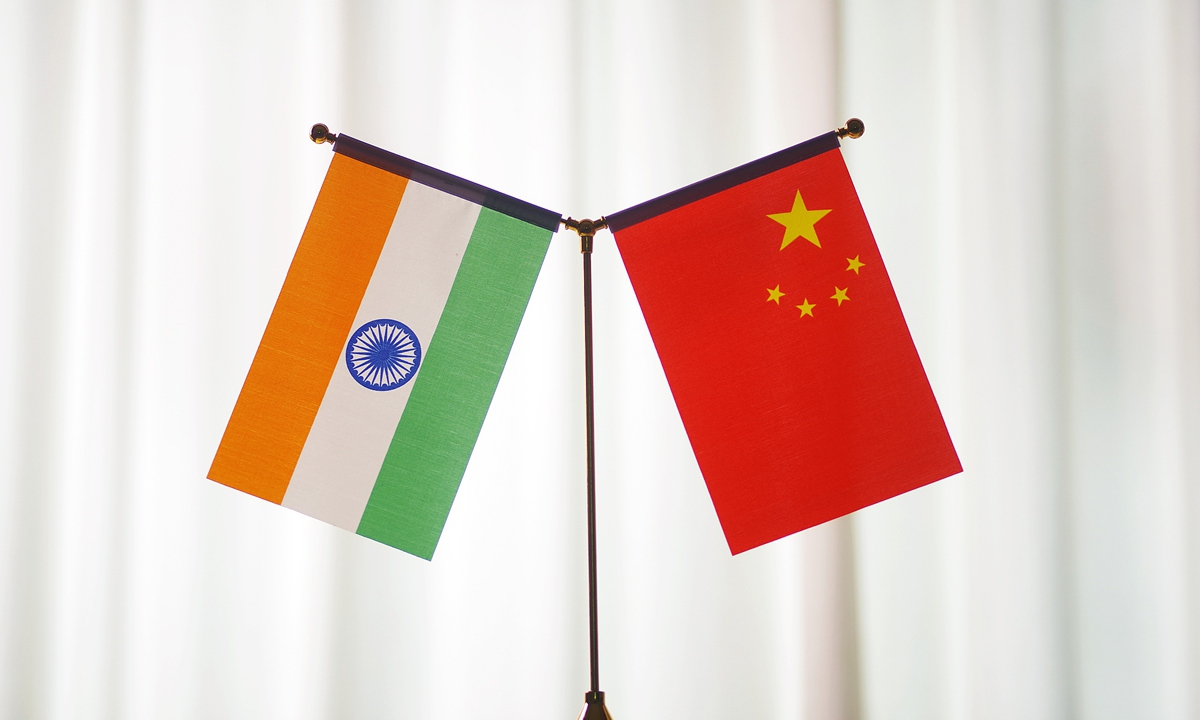
Photo:VCG
China and India on Sunday held the 16th commander-level talks, the third this year, which marked an overall positive atmosphere between the two neighbors, although it will take some time for the two countries to figure out a solution both sides can accept, observers pointed out.
According to Indian news outlet The Print, the 16th round of Corps Commander-level talks between India and China began on Sunday morning with both sides looking to ease the military standoff at the border.
The talks were held on the Indian side of the Chushul-Moldo border meeting point.
The previous talks were held on March 11, where China and India carried forward their discussions from the previous round on January 12 for the resolution of the relevant issues along the Line of Actual Control in the Western Sector.
The two sides detailed exchange of views in this regard, in alignment with the guidance provided by the state leaders to work for the resolution of the remaining issues at the earliest, according to a joint press release published by China's Defense Ministry.
China-India relations gained an upward momentum this year. State Councilor and Foreign Minister, Wang Yi, had in-person meetings with Indian Minister of External Affairs, Subrahmanyam Jaishankar, on March 25 during Wang's visit to India and on July 7 at sidelines of the G20 foreign ministers' meeting.
Since March this year, China and India have maintained communication and exchanges, effectively managed differences and a momentum of recovery has been shown in the overall bilateral relations between the two countries with common interests and similar legitimate claims, Wang said after the July meeting.
Jaishankar said that both sides have made positive progress in maintaining border stability, promoting practical cooperation and facilitating people-to-people exchanges since their meeting in March.
Qian Feng, Director of the Research Department of the National Strategy Institute at Tsinghua University, told the Global Times on Sunday that the "most dangerous" moment in bilateral relations has passed.
Through joint efforts, China-India relations have gained upward momentum since the clashes at the Galwan Valley. The overall atmosphere is positive, Qian said.
Although the previous two rounds of commander-level talks in 2022 did not achieve a major breakthrough, it is worth noting that both sides have insisted on relying on existing bilateral channels to resolve border issues through dialogue and communication, the expert said.
Not long ago, when Jaishankar visited Europe, he also publicly stated that both China and India are committed to solving problems through dialogue. He emphasized the two sides have the ability to solve their own affairs, sending a clear signal against a third party intervention.
The two sides are also trying hard to prevent frictions from escalating into conflicts. China and India continue to narrow differences through dialogue and release positive signals to avoid the recurrence or intensification of conflicts, according to observers.
The border issue, if unsettled, will always be a source of risk for the normal development of bilateral relations, Qian said. But because of the complicated situation, it may still take some time for the two sides to figure out a solution that both agree on.
The expert also pointed out China and India's similar position on the Russia-Ukraine conflict is actually a resemblance in understanding of the world situation and major issues as two emerging major powers with large populations.
The position of both India and China on the Russia-Ukraine conflict differentiates them from the West, indicating that the two countries have similarities in their international interests, which will help both sides to view border issues with a more positive approach and a vision beyond the Himalayas during the border talks, Qian stressed.




